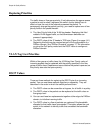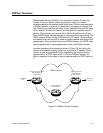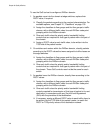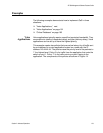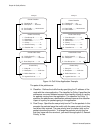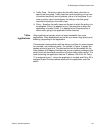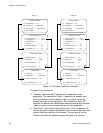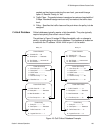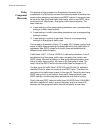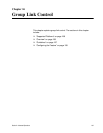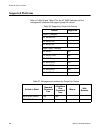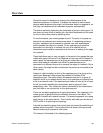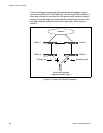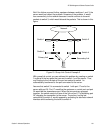Chapter 15: Quality of Service
184 Section II: Advanced Operations
Policy
Component
Hierarchy
The purpose of this example is to illustrate the hierarchy of the
components of a QoS policy and how that hierarchy needs to be taken into
account when assigning new priority and DSCP values. A new priority can
be set at the flow group and traffic class levels, while a new DSCP value
can be set at all three levels—flow group, traffic class and policy. The
basic rules are:
A new setting in a flow group takes precedence over a corresponding
setting in a traffic class or policy.
A new setting in a traffic class takes precedence over a corresponding
setting in a policy.
A new setting in a policy is used only if there is no corresponding
setting in a flow group or traffic class.
This concept is illustrated in Figure 17 on page 185. It shows a policy for a
series of traffic flows consisting of subnets defined by their destination IP
addresses. New DSCP values for the traffic flows are established at
different levels within the policy.
Traffic flows 149.11.11.0 and 149.22.22.0, defined by classifiers 1 and 2,
are attached to a flow group, traffic class, and policy that contain new
DSCP values. Because a setting in a flow group takes precedence over
that of a traffic class or policy, the value in the flow group is used. The
result is that the DSCP value in the two traffic flows is changed to 10.
The flow group for traffic flows 149.33.33.0 and 149.44.44.0, defined in
classifiers 3 and 4, does not contain a new DSCP value. Therefore, the
new value in the traffic class is used, in this case 30. The policy also has a
DSCP setting, but it is not used for these traffic flows because a new
DSCP setting in a traffic class takes precedence over that of a policy.
Finally, the new DSCP value for traffic flows 149.55.55.0 and 149.66.66.0,
defined in classifiers 5 and 6, is set at the policy level to a value of 55
because the flow group and traffic class do not specify a new value.



